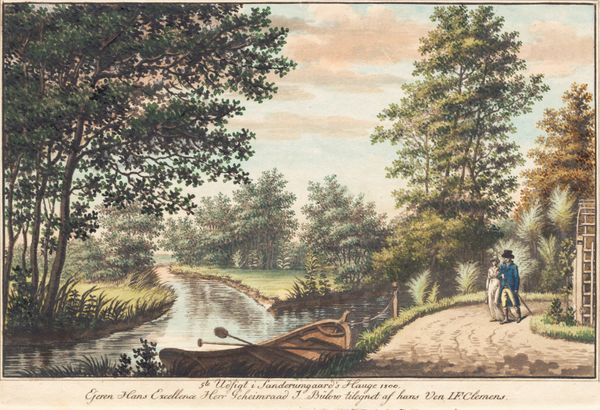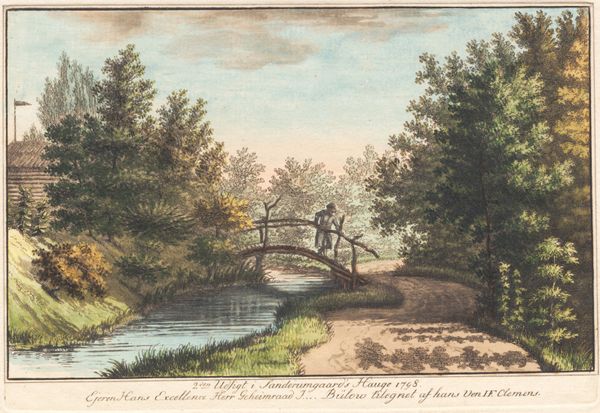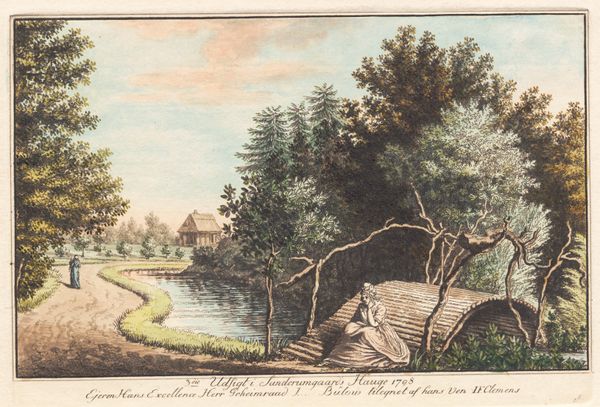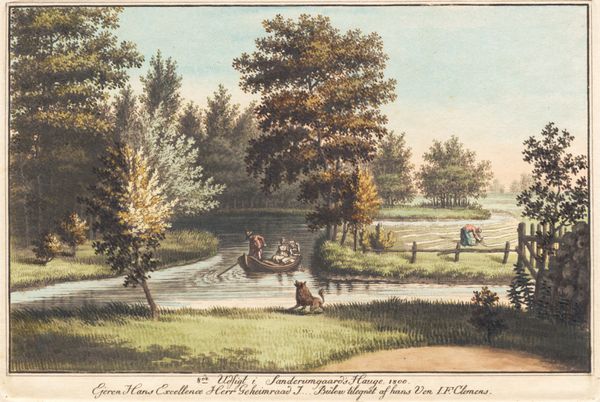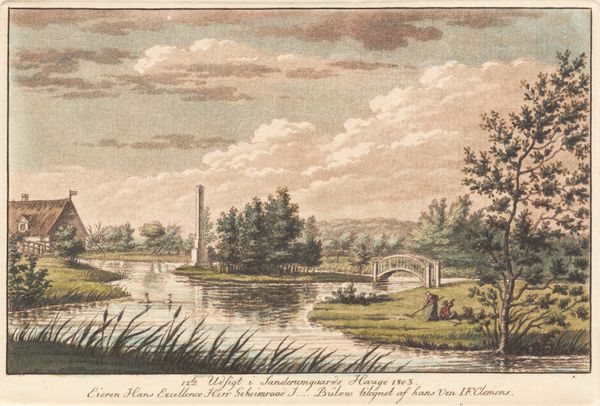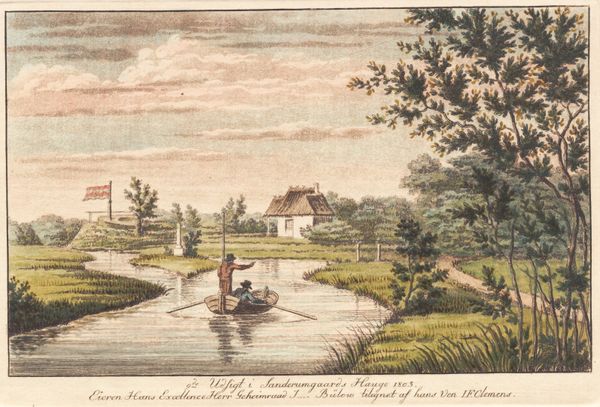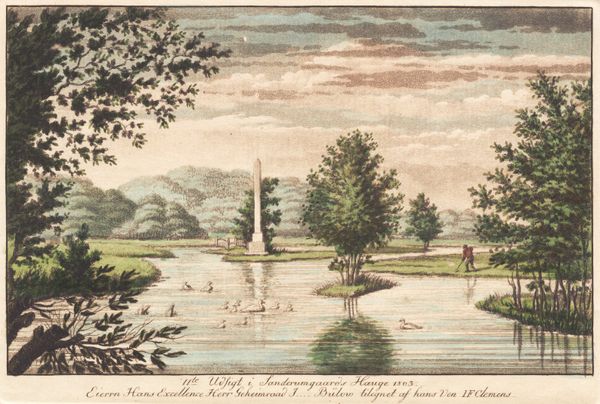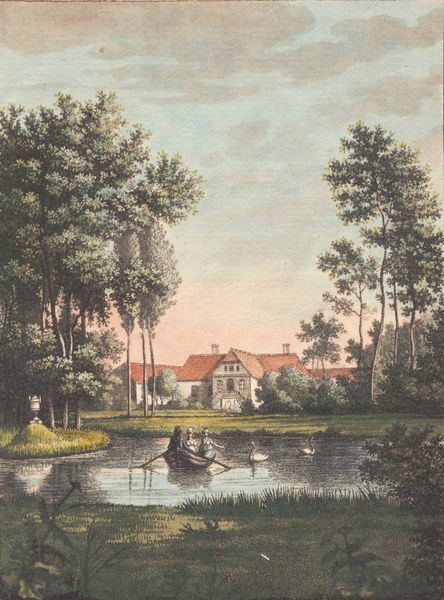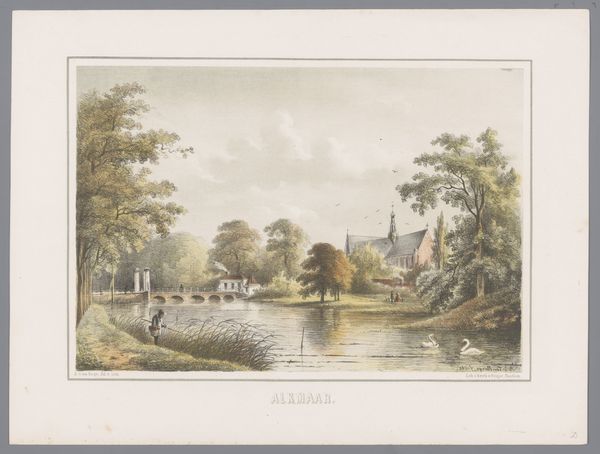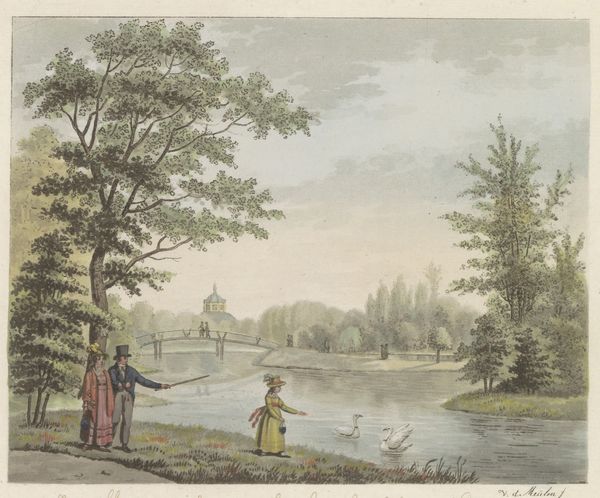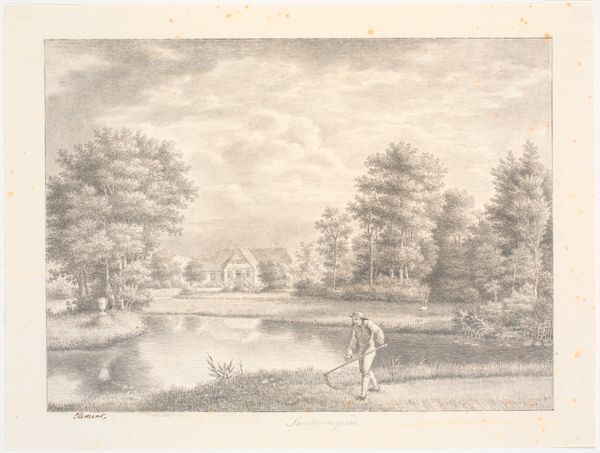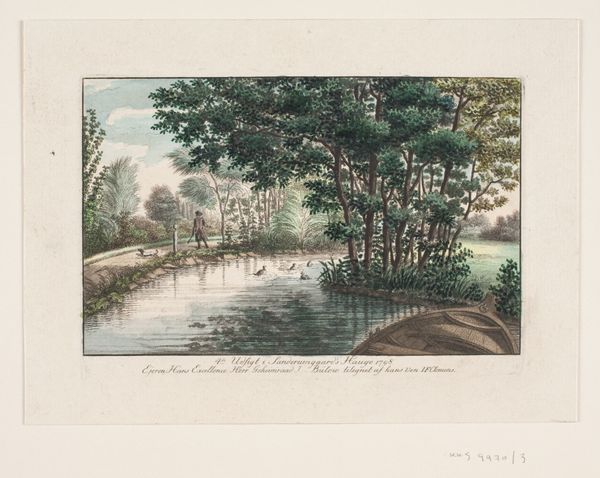
aquatint, print, etching, watercolor
#
aquatint
# print
#
etching
#
landscape
#
etching
#
watercolor
#
romanticism
#
botanical drawing
#
watercolour illustration
#
genre-painting
#
mixed medium
#
botanical art
Dimensions: 164 mm (height) x 220 mm (width) (bladmaal), 114 mm (height) x 171 mm (width) (plademaal), 105 mm (height) x 166 mm (width) (billedmaal)
Curator: Well, isn't this serene? Our focus today is on "Sanderumgaards have 5," created around 1800 by J.F. Clemens. It's a fascinating combination of etching, aquatint, and watercolor, now residing here at the SMK. What's your first take? Editor: Oh, I adore it! It feels like stumbling upon a secret, sun-dappled glade. It's peaceful but not in a boring way—there's a definite feeling of romantic longing here. The reflections in the water really pull me in. Curator: It does capture that late 18th-century fascination with the "natural" landscape. Clemens was making this print in the midst of landscape design movements that prized artifice as well as seemingly spontaneous vistas. Sanderumgaard, of course, was a leading estate at the time. Editor: I can totally see that artifice. Like that tiny bridge...perfectly positioned. Makes me think of how staged "nature" could be, like a pastoral drama ready to unfold. I mean, what do you imagine goes on across the water? Is that couple discussing philosophical treatises or sneaking a rendezvous? Curator: That is the brilliance of genre paintings! In this case, Clemens creates a seemingly tranquil garden that's in fact underpinned by social and political structures—the owner of the estate would have considered views like this when discussing his property or political authority. Editor: It's funny, that little touch of the upper class makes it more intimate, you know? More tangible, and the medium plays to that as well! I find aquatint and etching on paper can often accomplish more 'realistic' visions of reality. It sort of romanticizes reality itself Curator: A lot of scholarship actually emphasizes this era’s rise of individual engagement with spaces like these and this period sees new value put on individual perception within landscape. Do you suppose he sought to appeal to personal reflection or cultivate political authority? Editor: I think there can be both, truly. Great works tend to straddle personal appeal and a touch of grandiosity. Curator: Precisely. The push and pull that creates the art historical tension that shapes it into something interesting for ages. Thank you for coming! Editor: Absolutely. Glad I could help highlight something so beautiful and evocative. Until next time.
Comments
No comments
Be the first to comment and join the conversation on the ultimate creative platform.
